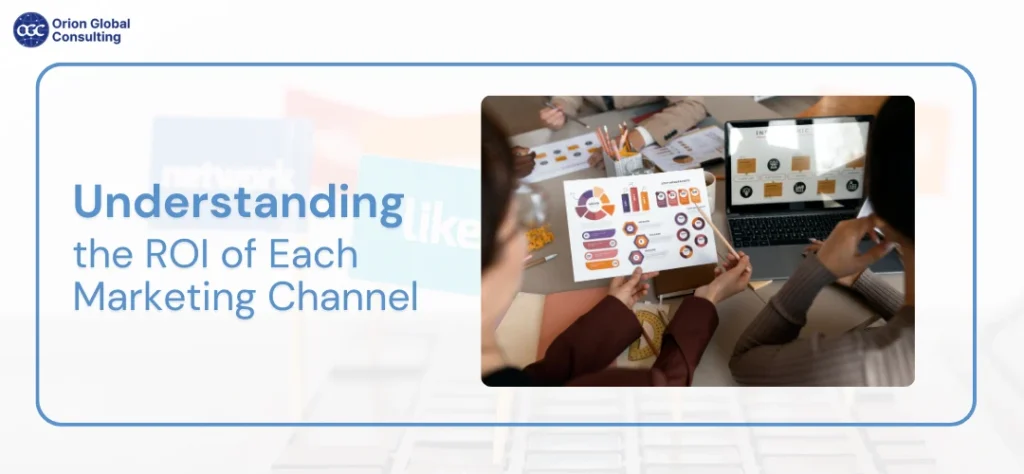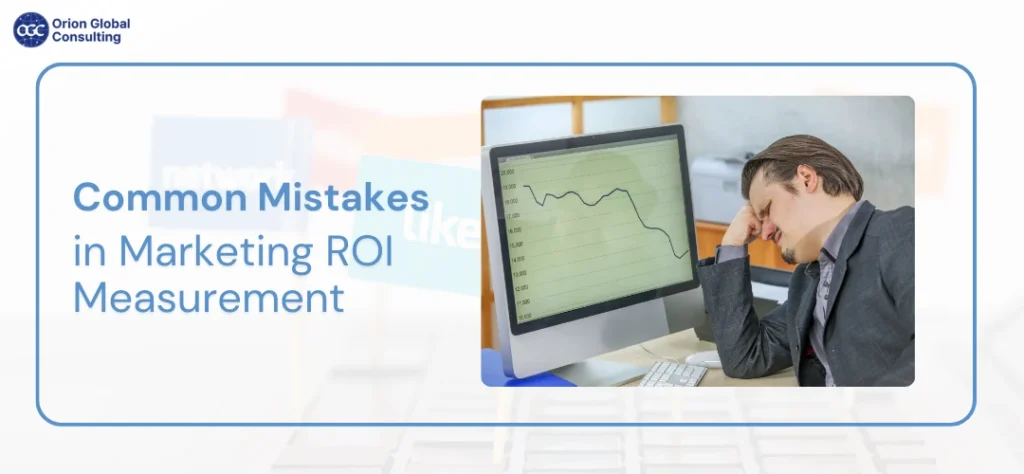
Every business wants to know if its marketing is paying off. Marketing ROI measurement helps you see if the money you spend on different channels brings back more than you put in. Without this, you might waste money on channels that do not work. With it, you can find what gets you good sales and invest wisely.
Marketing ROI Measurement: The First Step to Better Growth
Marketing ROI measurement shows the value you get back from every pound you spend. When you track ROI correctly, you can see which channels deliver sales and which do not. Plus, you can also spend more confidently on strategies that work. Stop wasting money on activities that give poor results. This is the base of smart marketing. If you know your return, you can grow with confidence.
The Challenges of Measuring ROI Across Channels
Measuring ROI is not always simple. Each channel behaves differently.
- SEO ROI takes time to show. Organic search builds trust, but results come slowly.
- PPC ROI delivers fast leads. But costs can rise quickly if ads are not managed well.
- Social media ROI builds awareness and relationships. But it may not always turn into sales straight away.
- Website design ROI depends on user experience. A well-designed site converts visitors into paying customers.
Each channel has different strengths. So you need proper ROI analysis to compare them fairly.
ROI Tracking Tools That Make the Job Easier
To measure success, you need the right tools. Many businesses use ROI tracking tools that link marketing data with financial results. Here are some of the best marketing ROI tools available today:
- Google Analytics 4 (GA4) with Funnel.io: Such tools are best for teams that want detailed multi-channel data.
- HubSpot with QuickBooks/Xero: Great for small and medium businesses. It connects marketing actions with financial numbers.
- Salesforce Marketing Cloud: This is an advanced option for large companies needing deep ROI analysis.
- Zoho CRM with Zoho Book: These tools are cheap and user-friendly. Hence, best for smaller companies.
- Dreamdata.io: Strong tool for B2B companies to follow customer journeys across channels.
- Wicked Reports: Works well for e-commerce companies that need to see customer lifetime value.
Choosing the best marketing ROI tools depends on your budget and business size. It also depends on your goals.
Digital Marketing ROI Strategies That Work
Having tools is not enough. You need digital marketing ROI strategies that help you act on data. Here are a few.
Set clear goals before campaigns and know what you want. Some of you may want sales, while some want brand awareness. There will be others looking for leads. The next strategy is to track full customer journeys. Many sales happen after several interactions, not just one click. You should also compare costs with outcomes. Always check if the revenue covers the spend and brings profit. In the last, optimise for the long term. SEO ROI might take longer. But it gives higher returns in the long run.
When you follow these steps, you use your data not just to track. But also to improve.
Understanding the ROI of Each Marketing Channel

- SEO ROI: Search engine optimisation builds visibility in search results. When done well, SEO ROI is high because you get long-term traffic without paying for every click.
- PPC ROI: Pay-per-click advertising gives fast results. You can track PPC ROI easily by comparing ad spend with revenue earned. But it needs constant optimisation to stay profitable.
- Social Media ROI: Social platforms help brands connect with people.
- Social media ROI can be measured through sales. It can also be measured through leads and customer engagement. The key is to link social activity with real business results.
- Website Design ROI: Your website is the first impression of your brand. Website design ROI comes from how well your site converts visitors into paying customers. A clear design and easy navigation increase sales.
How to Calculate ROI in Marketing?
The first step in marketing ROI measurement is knowing how to calculate it.
The formula is simple:
| ROI = (Revenue – Cost of Marketing) ÷ Cost of Marketing × 100 |
For example:
You spend £1,000 on PPC ads.You earn £5,000 in sales. So your ROI is 400%. This means for every £1 you spend, you earn £4 back. This simple formula helps you check if your campaigns are profitable.
Attribution Models: Who Gets the Credit?
One of the hardest parts of ROI analysis is deciding which channel gets the credit for a sale. Customers see many ads. They visit your website several times before buying. Attribution models help you understand this path:
- First-click attribution – Gives full credit to the first channel that brought the customer.
- Last-click attribution – Gives credit to the last action before the customer purchased.
- Multi-touch attribution – Shares credit across every step in the customer journey.
Choosing the right model matters because it changes the way your ROI looks. A balanced view comes from multi-touch attribution.
Common Mistakes in Marketing ROI Measurement

Even with the right tools, businesses sometimes make mistakes when tracking ROI. The most common are:
- Not including hidden costs. You should count staff hours and software subscriptions. You also need to consider design costs.
- Focusing only on vanity metrics. Likes, shares, and impressions matter. But they do not always equal revenue.
- Ignoring long-term customer value. A customer who buys once may return many times. If you ignore this, your ROI looks smaller than it really is.
By avoiding these mistakes, you make your ROI analysis more accurate and useful.
ROI Analysis: Making Sense of the Numbers
ROI analysis helps you see the bigger picture. You may find that PPC gives fast sales. But SEO builds sustainable growth. Or that social media creates trust. Your website converts that trust into money. By looking at all results together, you can balance short-term wins with long-term growth. ROI analysis also helps you defend your marketing budget by showing proof of returns.
Bringing It All Together
Marketing ROI measurement is not about complex reports. It is about knowing what works and what does not. You can build a strong plan by
- Using ROI tracking tools
- Testing digital marketing ROI strategies
- Looking at SEO ROI, PPC ROI, social media ROI, and website design ROI,
When you invest in the right channels, you stop wasting money. You start seeing steady growth. The best marketing ROI tools and a smart ROI analysis make sure every pound counts.
Conclusion
Measuring ROI is not just about numbers. It is about building a marketing system that grows your business without guesswork. You must know which channels bring the best results. This way, you can put your time and money where they matter most. At Orion Global Consulting, we make marketing simple:
Free SEO and ROI consultation today
contact@orionglobalconsulting.co.uk | +44 7551 161717
FAQs
What is a good ROI for digital marketing?
A good ROI depends on the industry. But most businesses aim for at least 3–5 times return on spend.
How often should I check my marketing ROI?
You should check monthly for active campaigns. Check quarterly for long-term channels like SEO.
Can small businesses measure marketing ROI without expensive tools?
Yes. Free tools like Google Analytics can help you track conversions and website performance.
Is ROI the only measure of marketing success?
No. ROI is vital. But brand awareness also matters. Also, customer loyalty and market share matter.
Does ROI change if I redesign my website?
Yes. Website design ROI can improve with better layouts and faster loading speed. Also mobile-friendly design can help. All this can increase customer conversions.
